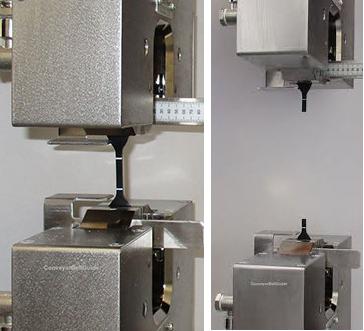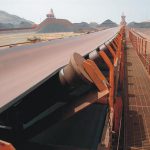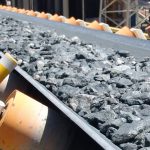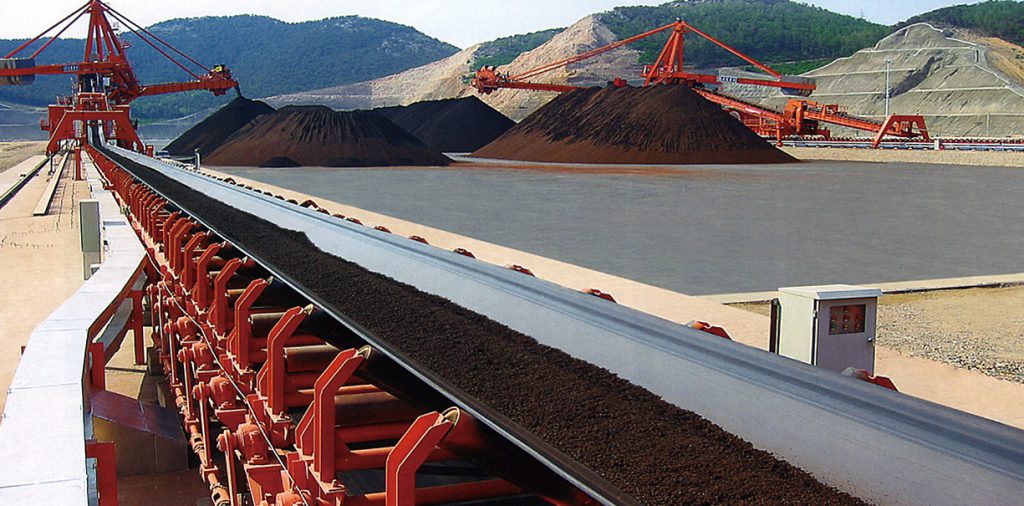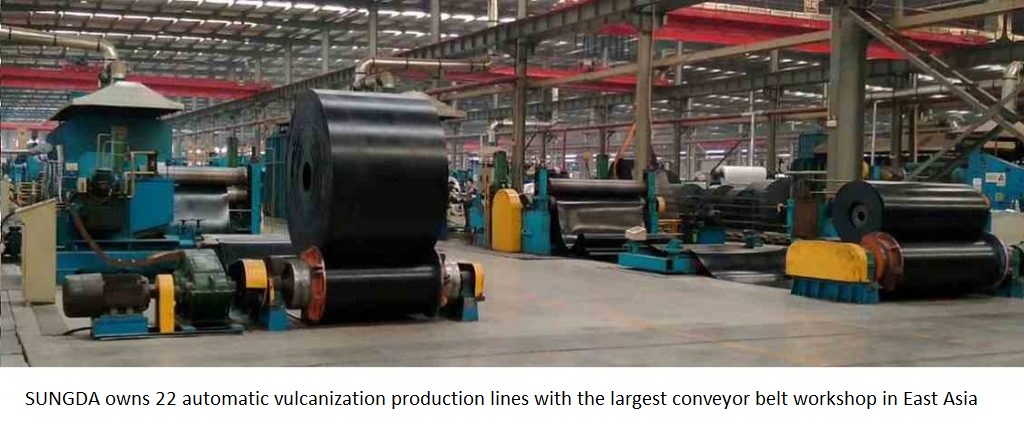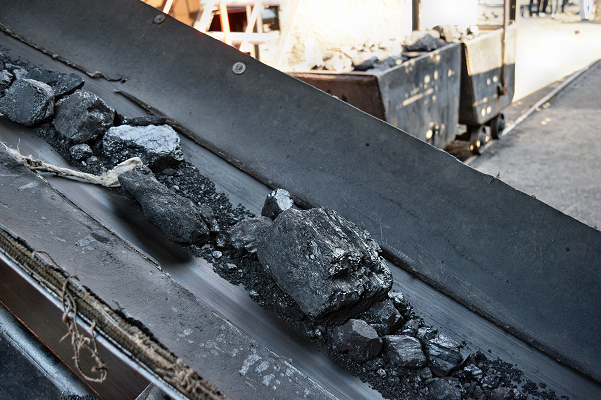How to select the rubber conveyor belt correctly?
Conveyor belts account for 30% to 50% of the entire equipment cost of the conveyor. The correct choice of conveyor belts can not only reduce the equipment cost of the entire conveyor machine, but also affect the design of the conveyor’s pulley, driving devices, rollers and other components.
The selection of the conveyor belt of the belt conveyor is based on the length of the conveyor, the conveying capacity, the tension of the conveyor belt, the characteristics of the conveyed material, the receiving conditions, the working environment and other factors. In addition to the longitudinal tensile stress, the conveyor belt is also subject to the bending stress of the roller and idler during operation. Most of the damage of the conveyor belt is manifested by the wear of the working surface and the edge, and the breakdown, tearing and peeling caused by the impact of large and sharp materials.
1 Pre-selection of conveyor belt
The selection of conveyor belt needs to consider many factors, mainly: conveyor system’s relevant requirements for conveyor belt; terrain environmental conditions and rated requirements for safety; type, shape, particle size, characteristics of conveying materials, whether there is thermal effect and chemical Function; requires maximum bandwidth, working tension and conveying capacity; minimum roller diameter; troughing ability and lateral stiffness; load support; length of curve section and transition section; tensioning method and stroke; receiving point and receiving conditions, and conveyor belt The operating cycle; requirements for impact resistance and tear resistance; joint conditions; and should meet the following requirements:
1.1 For short-distance belt conveyors, polyester fabric core (EP) conveyor belts should be used. Steel cord conveyor belts should be used for belt conveyors with large transport capacity, long transport distance, large lifting height, and high tension.
1.2 The material to be conveyed contains large-sized block materials, and when the direct drop of the receiving point is large, the impact-resistant and tear-resistant conveyor should be selected.
1.3 The maximum number of layers of the layered fabric core conveyor belt should not exceed 6 layers; when the conveyed material has special requirements for the thickness of the conveyor belt, it can be appropriately increased.
1.4 The downhole belt conveyor must be a flame-retardant conveyor belt.
2 Choice of covering layer
The choice of covering layer includes covering material, surface morphology and thickness.
The main components of the covering layer are various rubbers and plastics. In most climates, the rubber can work normally under the condition that the inclination angle is not more than 18°, while the normal operation of the PVC tape is below 12°. PVC is not as good as rubber in resilience, but it has better flame retardancy, discharge properties and cleaning properties. The properties of various rubbers are also very different. For example, natural rubber and styrene-butadiene rubber have good energy absorption and abrasion resistance; ethylene-propylene rubber is particularly heat-resistant; cyanide rubber has good oil resistance; propylene-butyl rubber is both heat-resistant and Resistant to oxidizing chemistry. Therefore, the choice of the type of covering material must be comprehensively considered according to the type of conveying material, operating conditions and working environment.
The increase in the thickness of the covering layer is beneficial to improve the impact resistance and abrasion resistance of the conveyor belt. Especially nowadays cotton canvas belt core has been replaced by synthetic fiber fabric belt core. The performance of the belt core has been greatly improved, while the thickness is relatively thin. In order to improve the overall performance of the conveyor belt, it is necessary to increase the thickness of the covering layer accordingly. Give full play to its advantages and increase the service life of the conveyor belt. However, the lower cover layer is too thick to increase the running resistance of the conveyor belt.
The basis for designing the thickness of the covering layer is the wear speed, material receiving conditions, the heat resistance of the covering layer, impact resistance and the operating cycle of the conveyor belt.
3 Conveyor belt joint Conveyor belt joint type should be selected according to the type of conveyor belt and the characteristics of the belt conveyor; steel cord conveyor belts should use vulcanized joints; multi-layer fabric core conveyor belts should use vulcanized joints; fabric whole-core transportation Adhesive bonding head should be used for the belt, and mechanical joints can also be used.
Conveyor belt vulcanization joint form: layered fabric core conveyor belt should adopt step joint; steel cord conveyor belt can adopt one-level or multi-stage vulcanization joint according to the tensile strength level.
4 Safety factor of conveyor belt
4.1 The importance of reducing the safety factor of conveyor belts and according to the fact that conveyor belts, especially high-strength conveyor belts, account for up to 30% to 50% of the investment in belt conveyors. To choose conveyor belts reasonably and reduce the investment of conveyor belts, an important way is to improve the conveyor belt joint technology to reduce the safety factor. For example, a 20km long conveyor in Australia reduces the safety factor of the steel cord conveyor belt from the usual 6.7 to 5.0, the weight of the conveyor belt is reduced by 14%, the life of the bearing roller is increased by 7%, and the life of the return roller is increased by 40%. The reduction of the conveyor belt tension reduces the corresponding structural investment, and the power consumption is reduced by 4%. The investment and operating costs can be reduced by about 10% within the 20-year service life.
4.2 Definition of international safety factor
The German Industrial Standard DIN22101-1982 defines the safety factor of the steel cord conveyor belt as the ratio of the tensile strength of the steel cord conveyor belt to the tension of the conveyor belt when the conveyor is running stably, with a minimum of 6.7. In 2002, Germany revised the original 1982 standard, and the new version adopted a brand-new concept and calculation method. The conclusion is that the safety factor of steel cord conveyor belt can be less than 6.7, and the lowest can be 4.5. In the past 10 years, some countries have already broken through the 1982 regulations. The belt conveyors in operation in Germany, Britain, New England, Australia and other countries use 4.5-5.5. According to the research results of foreign institutions such as CDI in the United States, the safety factor of steel cord conveyor belts can be reduced to below 5.5, ranging from 4.5 to 5.0.
After the above and the provisions in the standard: the safety factor of the conveyor belt should be selected according to different conditions: that is, the safety factor of the general belt conveyor and the steel cord conveyor belt can be 7-9; when the conveyor is controlled by soft start, For braking measures, 5~7 can be taken.
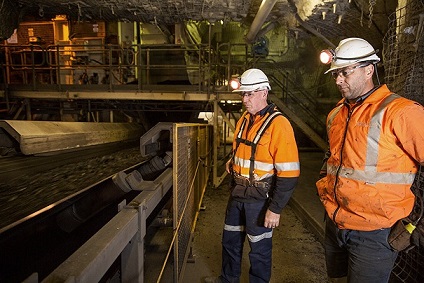
Tags: CONVEYOR BELT SELECTION,EP conveyor belt

